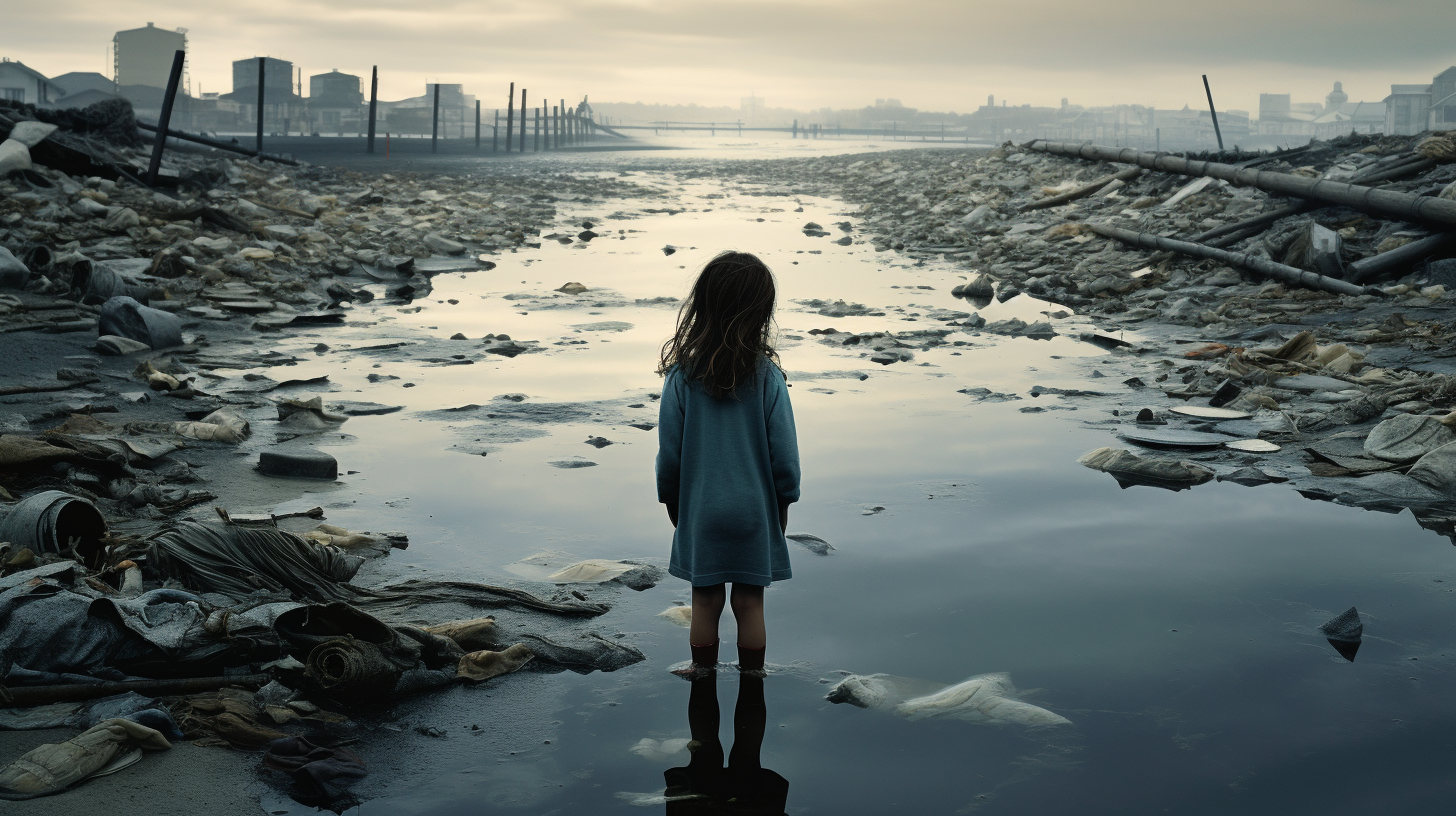In the annals of our planet’s history, there will be a chapter that future generations—if any remain—will read with an aghast sense of disbelief. It is the tale of The Day the Oceans Stood Still, not through some cosmic anomaly, but through the sheer force of human negligence.
Yes, dear readers, the bustling, mysterious depths that once heaved with currents and teemed with life now lay strangely quiescent. In this deep blue desert, the life aquatic is a solemn whisper of what it once was. Here, we explore the cataclysmic stasis that has the world holding its collective breath, not in anticipation but in dread.
The root cause is no enigma. Bio-indicators had waved their fraying flags for decades—the waning fish populations, the suffocated corals, the plastic-choked turtles. Each sign a breadcrumb leading to this moment. The oceans—as if deciding they had borne enough—stilled. Ripples no longer lapped, waves ceased their shorebound charge, the tides held in suspended animation. A silence descended upon the world’s largest habitat, insidious and profound.
But how could such a thing occur? Theories abound. Scientists speak in urgent tones of the ‘slowing gyres’, vast vortexes of currents driven by the world’s wind systems, now made lethargic by the altered atmospheric compositions of our greenhouse-infested skies—a feedback loop from hell.
Pollution is, as ever, the brazen accomplice. As we uncovered in ‘Seas of Garbage – Oceans’ Plight Intensifies’, the waters are reeling from our reckless abandon. The Great Pacific Garbage Patch, now perhaps better termed the Great Pacific Garbage Continent, extends its toxic tendrils, ensnaring life and Jamalight
The day the oceans stood still was not marked by bang or whimper but by an insidious creep. A fog of fatalism settled on the coastal communities as their livelihoods, dependent for millennia on the ocean’s grace, found themselves bereft. Descriptions of despondent fishermen walking their lifeless shores under an indifferent sun echo amongst environmental circles.
Further out to sea, where the blue turns to black, the stillness grips tighter. The deep-sea ecosystems, once dependent on the falling detritus from above, now starve in an enforced fast. Creatures so wonderfully alien in form, adapted to the pressures of the abyss, fade into the darkness from whence they once flourished.
Where do we stand amidst this catastrophe? Apologists scurry to offer excuses or redirect blame, but the truth is inescapable. This great cessation is humanity’s doing, an unwanted legacy bequeathed by our fervor for disposable conveniences and our crippling inertia in the face of escalating crises.
And yet, the pages turn. Each day, the stillness stretches on, forcing upon us a new normal—a world in which children peer curiously at the concept of waves, in which the once vibrant ports are now silent monuments to a halcyon past.
As we dissect this grim epoch, an inevitable question looms: What now? Can we resurrect the ceaseless dance of the oceans? Or are we to be the mournful chroniclers of the last gasps of a drowning world?
This is not an article of hope, for hope peddles in the currency of potential futures. Here, we deal in the stark ledger of the now, the unflinching recognition that the day the oceans stood still may very well mark the end of an aquatic era, a full stop in the stories of countless species, and a dark prelude to our own tale’s concluding chapters.
